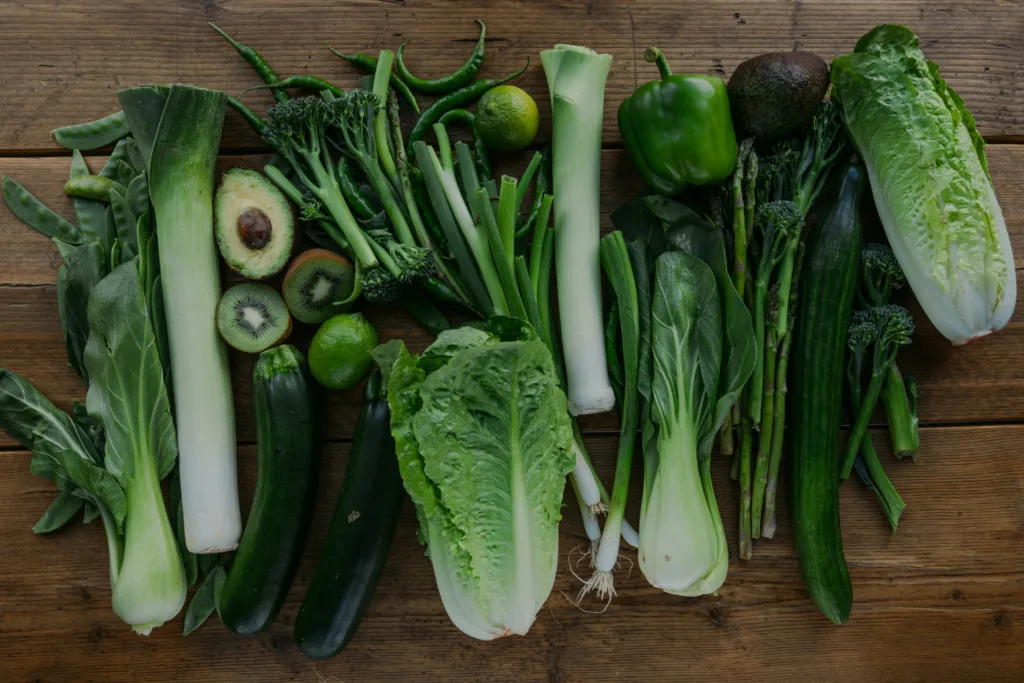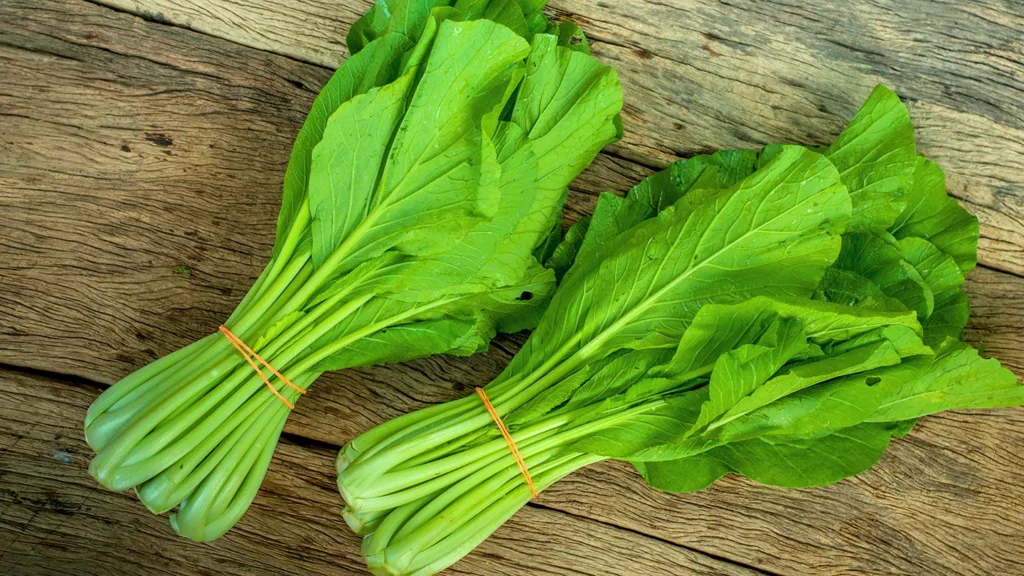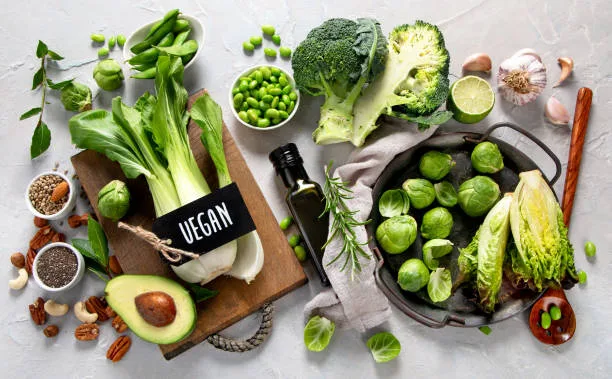Eating healthy and losing weight often go hand in hand. When looking to shed pounds in a sustainable, nutritious way, what we put on our plates matters. This is where leafy greens come into play. These nutrition-packed vegetables can be powerful supporters on your path to weight loss success.
In this post, we’ll explore the many benefits leafy greens provide for both health and weight management. We’ll uncover why you should make them a feature of your diet, along with delicious recipes and meal ideas to help you enjoy more greens. Read on to learn how these superfoods can help you reach your goals!

The Nutritional Powerhouse of Leafy Greens
Leafy green vegetables pack a serious nutritional punch. They contain a wealth of vitamins, minerals, fiber and other beneficial plant compounds. Just one serving delivers a big boost towards meeting your daily needs for nutrients that are essential for good health.
Leafy greens are loaded with vitamin A in the form of beta-carotene. This important vitamin supports immune function, vision health and cell growth. Beta-carotene is a carotenoid and antioxidant that gets converted into active vitamin A in the body. Vitamin A maintains healthy skin and mucous membranes and is essential for eye health. It also regulates cell growth and immune function. Just one cup of cooked spinach provides over 50% of the recommended daily intake for vitamin A.
Leafies are also excellent sources of vitamin C, which acts as a powerful antioxidant to reduce damage from free radicals. Free radicals are unstable molecules that can accrue in the body through metabolism, stress, pollution and other factors. Vitamin C neutralizes these free radicals to protect cells from damage. It also supports immune function and boosts absorption of non-heme iron from plant foods. A single serving of leafy greens like kale, collards or turnip greens provides between 30-60% of the RDI for vitamin C.
Vitamin K is abundant in greens and aids blood clotting and bone health. It is a fat-soluble vitamin that supports bone mineralization and blood coagulation. Vitamin K activates proteins involved in blood clot formation and prevents abnormal calcification of arteries and soft tissues. Leafy greens like spinach, collards and broccoli provide up to 700% of the RDI for vitamin K in just one cooked cup.
Minerals like magnesium, potassium, calcium and iron are also found in leafy greens. Magnesium helps regulate blood pressure, potassium supports heart health and iron carries oxygen through the blood. Leafy greens are one of the best plant-based sources of these essential minerals.
Magnesium relaxes blood vessels and regulates calcium channels for healthy blood pressure. It’s also involved in over 300 enzymatic reactions in the body. Potassium balances fluid levels in the body and allows for normal muscle and nerve function. Iron transports oxygen throughout the bloodstream and supports energy levels. Getting these minerals from diet is better than supplements for overall health.
Leafy greens even contain some plant-based omega-3 fatty acids. Omega-3s are a type of polyunsaturated fat with potent anti-inflammatory effects. They are linked to brain, heart and joint health. The small amount of omega-3s in leafy greens provides extra anti-inflammatory benefits.
The fiber content of leafy vegetables is significant. It helps regulate digestion and promotes feelings of fullness. Fiber comes in two main forms – soluble and insoluble. Insoluble fiber adds bulk to stool and speeds up digestion. Soluble fiber dissolves into a gel-like consistency and feeds good gut bacteria. Leafy greens contain both types of fiber for comprehensive digestive health.
Fiber normalizes bowel movements, prevents constipation, and manages blood sugar levels after meals. It also makes you feel satiated after eating, which curbs overeating. Fiber is fuel for the trillions of beneficial bacteria living in the gut microbiome. These bacteria influence immunity, nutrient absorption, inflammation, hormone balance and much more. Getting enough prebiotic fiber from leafy greens is essential for overall wellbeing.
All of these vitamins, minerals, fiber and beneficial plant compounds in leafy greens work together to support optimal health. Their synergistic combination provides a spectrum of nutrients your body depends on. That’s what makes leafy greens a true superfood!

Leafy Greens and Weight Management
Given their stellar nutrition profile, it’s no surprise that leafy greens can be amazing allies for weight loss. The high fiber and water content of leafies means they have low calorie density. Calorie density refers to the number of calories in a given weight or volume of food. Foods with a low calorie density provide fewer calories per gram.
For example, 100 grams of spinach only contains about 23 calories. That same weight of potato chips contains over 500 calories. You can eat a large volume of spinach to feel satisfied while consuming minimal calories. This makes it easier to fill up on fewer calories overall, which is the key to shedding pounds.
To lose weight sustainably through nutrition, you need to maintain a calorie deficit. That means consuming fewer calories than your body burns each day. Filling up on low calorie density foods is an effective way to cut calories without deprivation. Leafy greens allow you to eat satisfying portions that take up space in your stomach and provide bulk without a huge calorie load.
In addition to being low in calories, leafy greens are incredibly satisfying. Despite being low in calories, greens are high in volume and fiber. The fiber they contain slows digestion, preventing hunger pangs and cravings. Foods with fiber take longer to pass through the digestive tract, keeping you fuller for longer.
Multiple studies have shown that meals incorporating leafy greens and other high fiber vegetables keep you feeling satiated for longer compared to meals without produce. One study found that eating a salad before a meal reduced total calorie intake by 7-12%. Their high water content also contributes to their satiety factor.
Beyond fiber content, the nutrients in greens such as magnesium and chromium also support satiety signals in the body. This compounding effect makes leafy greens uniquely satisfying foods.
Eating leafy greens helps reduce overall calorie intake, while providing bulk and satisfaction to meals. This one-two punch is perfect for weight management. Greens help regulate appetite signals, boosting satiety hormones and slowing digestion. This allows you to decrease calorie consumption without leaving you hungry. Leafy greens make it easier to eat less without feeling like you’re depriving yourself.

Boosting Metabolism with Leafy Vegetables
On top of being low-calorie and highly satiating, some leafy greens contain specific compounds that give your metabolism an extra boost. These metabolism-supporting compounds include nitrates, antioxidants like vitamin C and beta-carotene, and the mineral magnesium.
Nitrates are natural compounds found in many vegetables, with especially high concentrations in leafy greens. Once consumed, nitrates get converted into nitric oxide in the body. Nitric oxide is a molecule that relaxes and widens blood vessels, increasing circulation.
This effect allows more oxygen and nutrients to reach tissues, enhancing their function. Regarding metabolism, improved circulation to muscle tissues enables them to work more efficiently. Studies have shown nitric oxide supplements aid metabolic rate and athletic performance for this reason.
Leafy greens are the best dietary sources of nitrates. Consuming them prompts the sustained release of nitric oxide, increasing the metabolism-boosting circulation benefits. Research indicates that eating nitrate-rich greens can increase post-meal calorie burn by up to 30%!
Antioxidants found abundantly in leafy greens also boost nitric oxide activity. Vitamin C has been shown to recycle other antioxidant compounds in the body that degrade while protecting nitric oxide. Maintaining optimal levels of nitric oxide ensures sustained fat-burning effects.
Beta-carotene, another antioxidant in leafy greens, also enhances nitric oxide-related fat burning. A study published in the Journal of Nutrition found that higher beta-carotene intake was associated with reduced risk of metabolic syndrome. Beta-carotene increased nitric oxide status, lowering oxidative stress and improving the body’s ability to burn fat.
The mineral magnesium found abundantly in leafies plays a role too. It activates more of the body’s calorie-burning mechanisms on a cellular level. Magnesium intake prompts greater fatty acid oxidation and heat production for more calories burned at rest.
Through these varied mechanisms, eating leafy vegetables like spinach, kale, lettuce, arugula and other greens can increase your metabolic rate. The nitrates, antioxidants and magnesium in greens upgrade your body’s ability to burn calories efficiently. This compounds the fat-burning effect of being in a calorie deficit.
Leafy Greens and Digestive Health
Beyond their stellar nutrition and satiety benefits, leafy greens also support weight loss through improving digestive health. A healthy, regular digestive system is key for effective weight management for multiple reasons.
First, leafy greens contain insoluble fiber that adds bulk to stool and speeds up transit time in the gut. This action combats constipation by encouraging rapid elimination of waste products. Constipation can cause bloating, discomfort and weight retention in the form of trapped waste.
Leafy greens provide both soluble and insoluble fiber to optimize digestion in both the small and large intestine. The insoluble fiber prevents constipation and disruptive digestive symptoms.
Additionally, maintaining regular bowel movements is essential when reducing calorie intake for weight loss. Infrequent elimination allows waste and toxins to accumulate and get reabsorbed in the colon. This causes toxicity and inflammation which can stall weight loss.
Leafy greens provide the insoluble fiber needed to keep you regular, ensuring you don’t retain excess waste products. Staying regular this way prevents bloating and discomfort associated with constipation. You also won’t retain excess water weight or feel weighed down by trapped waste.
The prebiotics in leafy greens also lead to better digestion and metabolism. Prebiotics are fibers that act as fuel sources for the good bacteria in your gut microbiome. Feeding these bacteria causes their populations to flourish.
A robust, diverse microbiome made up of probiotics translates to improved digestive and metabolic health. Beneficial gut flora increase the bioavailability of nutrients, reduce gut inflammation, and optimize hormone balance. Gut bacteria even directly influence weight loss!
Studies show certain strains of probiotics correlate with lower BMI and reduced fat accumulation. The prebiotics in leafy greens support the growth of beneficial bacteria to reshape your microbiome for weight loss. This creates a symbiotic cycle where leafy greens feed probiotics and probiotics boost metabolization of nutrients from greens.
Through these varied mechanisms, increasing leafy green intake optimizes digestive health and function. This allows your body to absorb nutrients efficiently, eliminate waste promptly, and burn calories effectively. Leafy greens are truly a dieter’s best friend!

Recipes and Meal Ideas
Adding more greens into your diet is easier than you think! Leafy vegetables are incredibly versatile and can be incorporated into a wide variety of dishes. Here are some delicious recipe ideas to help you eat more greens:
Green Smoothies – Blended smoothies are an easy way to pack in servings of leafy greens first thing in the morning. Blending greens into liquid form avoids issues with texture. Try spinach, kale or romaine combined with a frozen banana, mixed berries, citrus juice, avocado and nut milk or yogurt. The natural sweetness covers up the grassy flavor of raw greens.
Big Salads – Build a satisfying, nutrient-dense salad by starting with a base of spinach, arugula, romaine or mixed greens. Top it with vegetables like tomatoes, carrots, broccoli, cauliflower, etc. Add some plant-based protein with chickpeas, beans, tofu or lentils. Then finish it off with healthy fats from nuts, seeds, avocado and a light dressing like balsamic, lemon juice or tahini.
Sauteed Greens – Cooking greens quickly in olive oil mellows out their flavor. Sautee spinach, kale, chard, collards or other greens with garlic and seasoning. Add the sauteed greens to omelets, tacos, pasta dishes, grain bowls and more. They wilt down significantly in volume.
Soups – Puree leafy greens into broth-based soups for a nutrition boost. Or add spinach, chopped kale or chard to bone broth, tomato soup, vegetable soup and more. The other ingredients help mask the stronger flavors of cooked greens.
Green Pasta – Make a fast weeknight pasta dinner more nutritious by mixing greens into the sauce. Blend up spinach, basil and arugula with olive oil, garlic, Parmesan and pine nuts for a flavorful pesto. Toss the pesto with whole wheat pasta and chicken or white beans.
Frittatas – Include chopped or torn leafy greens in egg-based frittatas and crustless quiches. Sautee the greens first to reduce volume, then combine them with the egg mixture and pour into a baking dish to bake. This is an easy way to add greens into breakfast.
Stir-Frys – Fire up a veggie stir-fry with broccoli, onions, bell peppers and bite-sized greens like bok choy, napa cabbage or snow peas. Cook quickly over high heat in coconut oil with garlic, ginger, soy sauce, sesame oil and chili flakes for tons of flavor.
With a little creativity, leafy greens can be incorporated into pretty much any meal or snack throughout your day. Keep your fridge stocked with fresh greens and add them generously while cooking. Plan meals around greens rather than adding them as an afterthought for best results.
Overcoming Common Challenges
Switching to a greens-focused diet comes with some common challenges. But these hurdles can be overcome with a little planning and patience. Here are tips for tackling the top issues people face when increasing leafy green intake:
Taste – For those new to eating copious greens, the grassy, bitter flavor can be off-putting at first. But the taste for greens can be acquired over time. Start slow by mixing small amounts into smoothies, salads and sauces. Cooked greens are also milder tasting than raw. Gradually increase the amount as your palate adjusts.
Convenience – Preparing fresh greens requires rinsing, drying, chopping, etc. which takes more time than grabbing packaged foods. Seek shortcuts by buying pre-washed bagged greens rather than loose heads which need extra prep. Rinse and dry big batches at once. Learn quick cooking methods like sauteeing and stewing.
Digestive issues – Sudden increases in insoluble fiber from greens can cause gas, bloating and discomfort in some. This is due to changes in your gut microbiome as it adapts. Start with small servings of cooked greens and ramp up slowly. Drink plenty of water. Enzyme supplements can aid digestion too until your body adjusts.
Affordability – Leafy greens are one of the most affordable produce options. But incorporating them in large amounts does add up cost-wise. Opt for bags of frozen greens for smoothies at a lower cost. Buy in bulk when greens are on sale. Prioritize your grocery budget towards produce over junk food.
Boredom – Eating the same greens every day can get monotonous. Vary the types of greens you buy like kale, spinach, arugula, romaine, swiss chard, etc. Try new leafy greens like collard, mustard or turnip greens. Change up cooking methods – sautee, steam, blend, etc. Combining with different herbs, spices and ingredients keeps meals exciting.
While increasing green intake takes some strategy at first, making greens a dietary cornerstone is worth the effort. The nutrients and health benefits leafy vegetables provide are invaluable.
Combining Leafy Greens with Other Superfoods
To maximize the nutritional value of leafy greens, combine them with other superfoods like healthy fats, herbs and spices. Certain food synergies exist that enhance the bioavailability of compounds in greens. Some smart pairings include:
- Greens with avocado or olive oil – The fat-soluble vitamins (A, E, K) in leafy greens are better absorbed when eaten with healthy fats.
- Greens with citrus – Vitamin C boosts iron absorption from the iron in leafy greens. Add lemon, lime or orange.
- Greens with onions/garlic – Sulfur compounds in allium vegetables work synergistically with greens.
- Greens with tomatoes – Eating greens like spinach with tomatoes enhances the uptake of antioxidants like lycopene.
- Greens with spices – Anti-inflammatory compounds in spices like turmeric, ginger and cayenne amplify the benefits of produce.
By thoughtfully combining leafy greens with complementary superfoods, you can maximize their nutritional value and flavor. Don’t be afraid to get creative with salads, sides, main dishes and more.
Conclusion
When it comes to losing weight sustainably and enhancing overall wellbeing, leafy green vegetables reign supreme. Chock full of satiating fiber, essential vitamins and minerals, metabolism-boosting compounds and more, greens offer awesome nutritional support.
Making leafy vegetables a foundation of your diet provides bulk and satisfaction without excess calories. Their stellar nutrition profile works synergistically to optimize health and accelerate weight loss. Leafy greens truly check all the boxes for successful weight management.
As you embark on your own path to healthy weight loss, make the commitment to substantially increase your leafy green intake. Incorporate greens at each meal and snack in diverse recipes. Surround yourself with these nutritious superfoods to curb cravings, fire up fat burning and take charge of your health. Here’s to the power of greens helping you achieve your goals!
Thank you for reading this post, don't forget to subscribe to our free newsletter
!
